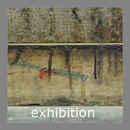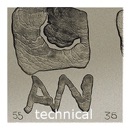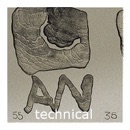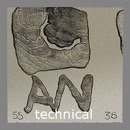
THE DISCOVERY OF LITHOGRAPHY
Lithography is about the only process of printmaking for which we have a clear documentary history of its discovery and development by its inventor, Alois Senefelder (1771-1834). His discovery of the principle of lithography in Bavaria in 1798 is set out in the treatise Vollständiges Lehrbuch der Steindrückery published in Munich in 1818. The English translation A Complete Course in Lithography was published the following year.
Having ambitions to become a playwright, Senefelder had been researching inexpensive alternatives for copper, used at that time for the purpose of engraving and etching, which would enable him to publish his own work. Experimenting with the fine-grained limestone from the nearby quarries at Solnhofen he discovered that the flat surface of the stone was excellent for writing and for drawing. Originally it is thought that he had intended engraving or etching the surface of the stone and to then print intaglio. By chance however he discovered that providing drawing was made using a greasy substance and that the whole stone was then treated with a mild acidic solution, it was then possible to ink the drawing whilst the rest of stone remained clean and ink free.
As result of political instability caused in part by the Napoleonic Wars, the initial establishment of lithoraphy in Europe was somewhat erratic. Senefelder's determination to retain full Patent rights, also was not conducive to sharing and the training of printers in a new process that was difficult - even for Senefelder to fully understand.
In 1799 however as a result of a commission to publish the work of the composer Franz Gleissner, Senefelder was forced to share his knowledge with the Offenbach brothers, Friedrich and Philipp André.
By 1801 a press had been established in London by Philipp André and soon after his brother received licence to establish a workshop in Paris. As these and other presses were established throughout the cities of Europe, so the refinement and dissemination of lithography advanced, such that by 1822 there were no fewer than 18 presses in Paris and many more had been established throughout France and Germany printing everything from texts to textiles.
Whilst in London, Philipp André was responsible for the first series of Fine Art prints ever to be printed using lithography - an early example of collaboration working with a group of artists that included the President of the Royal Academy, Benjamin West. Whilst the resulting portfolio of prints entitled Specimens of Polyautography consisted of relatively crude printed pen and ink drawings, this portfolio at least demonstrated the potential of lithography and set the scene for the subsequent development of a collaborative tradition that still occurs today between artists and their printers.
From the outset, collaboration in lithography has always been important, since generally artists have tended to need the services of highly skilled printers, who understand the complexity of the process. Collaboration has also been responsible for the development of new techniques as printers have sought to find new approaches in printing that equate to techniques used in other media. During the 1820s the English printer Charles Hullmandel and the artist Thomas Shotter-Boys were partly responsible for developing the sophisticated technique of chromolithography that could faithfully reproduce the colour and tone found in oil painting. In the 1870s James McNeil Whistler and Thomas Way helped to popularise transfer lithography, a process that had previously only been used in commercial printing. Thomas Way was also responsible for printing the remarkable lithotints used for Whistler's series of Nocturnes.
In the 1890s Toulouse Lautrec working with Jules Chéret helped to revolutionise poster design in Paris; whilst the printer Auguste Clot collaborating with the Pointillist artist Paul Signac, experimented with newly developed inks that resulted in delightful transparency of colour. Picasso and the printer Fernand Mourlot working after the Second World War, experimented working in series, counter-etching stones, deleting and redrawing images and editioning each resulting state proof.
In the USA, printer Ken Tyler, whose philosophy has been 'Everything goes and anything is possible' has been responsible not only for some extraordinary prints, but also for some of the most ambitious technical feats in printing ever seen. Tyler who was one of the first Master Printers to be trained at the Tamarind Institute, later set up his own studio called Gemini. Recently he donated to Tate Modern, his life-time collection of prints made with artists with whom he has collaborated during the last forty years. Including work by artists such as Frank Stella, James Rosenquist, Helen Frankenthaler and Robert Motherwell, to name but just a few; the sheer scale and complexity of the prints resulting from these collaborations necessitated the development of new presses, machinery and techniques never before employed.
Most techniques used in printmaking have tended to derive from innovations made first in industry and in lithography this has generally equated to the adoption of plates, photoplates and more recently digital technology. The idea that grained zinc plates could be used instead of stone had been tested by Senefelder as early as 1817, however zincography did not become popular in Europe until after 1840. The real impetus for the development of plate lithography was of course economic and by the end of the nineteenth century as the rotary press became automated and steam-driven, plate lithography had all but replaced the use of stone for most printing purposes.
The use of aluminium plate was a later development and was not introduced until the final decade of the nineteenth century, when the material became more readily available in thin metal sheets similar to zinc. The prevalence of aluminium plate lithography or algraphy as it was once known became firmly established with the development of offset printing during the twentieth century and even today the use of aluminium is almost entirely synonymous with this process.
The invention of photography in 1839 less than fifty years after lithography was first discovered, led initially to an uneasy rivalry between the two processes. However it soon became clear that if photographic images were to be reproduced and printed on an industrial scale, the development of photomechanical processes would be required not only in lithography, but also in a wide variety of intaglio and relief methods of printing as well. The development of photoplates such as we know them today, occurred towards the end of the nineteenth century, with the introduction of albumen-based photosensitive emulsions and the deep etch plate process that was used until the 1950s. The development of photopolymers and diazol resins during the 1960s however revolutionised the industry and helped to establish offset lithography as the principle method of printing.
In the last twenty years the impact of digital technology has been to transform the landscape of the whole industry with reverberations occurring right through printmaking and fine art collaboration. Already technology exists for direct imaging systems that will ultimately make even plate lithography redundant for commercial printing. Despite the apparent sophistication of these technological advances, it is worth noting however, that since its discovery in 1798, every single development that has occurred in lithography, including direct to-press technology, has relied in some way, upon the same principle of planographic printing first propounded by Senefelder over two hundred years ago.





